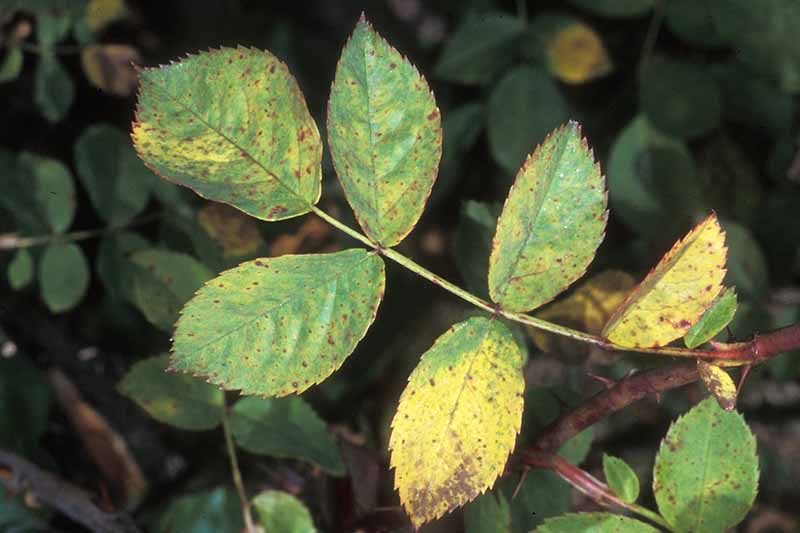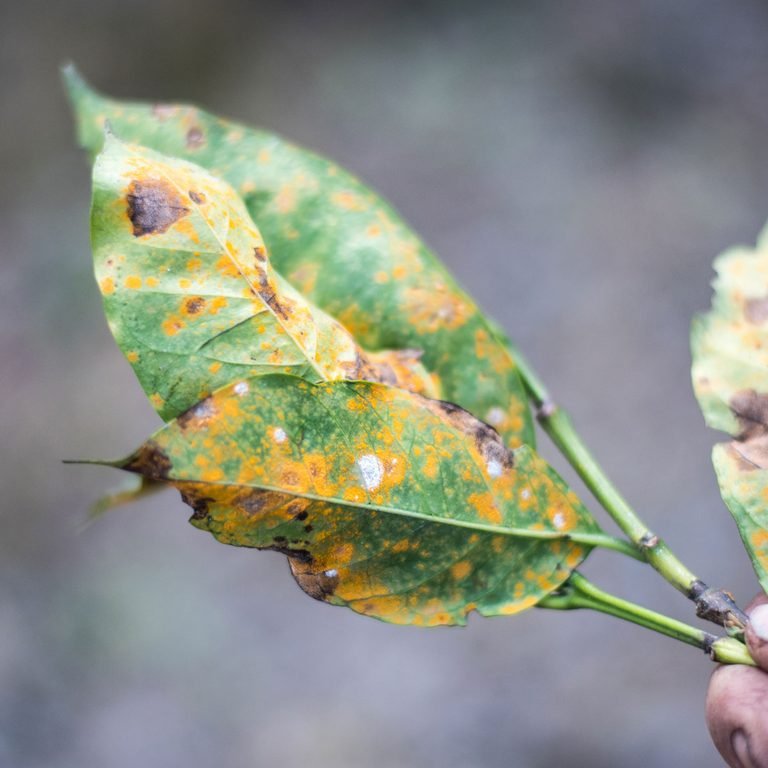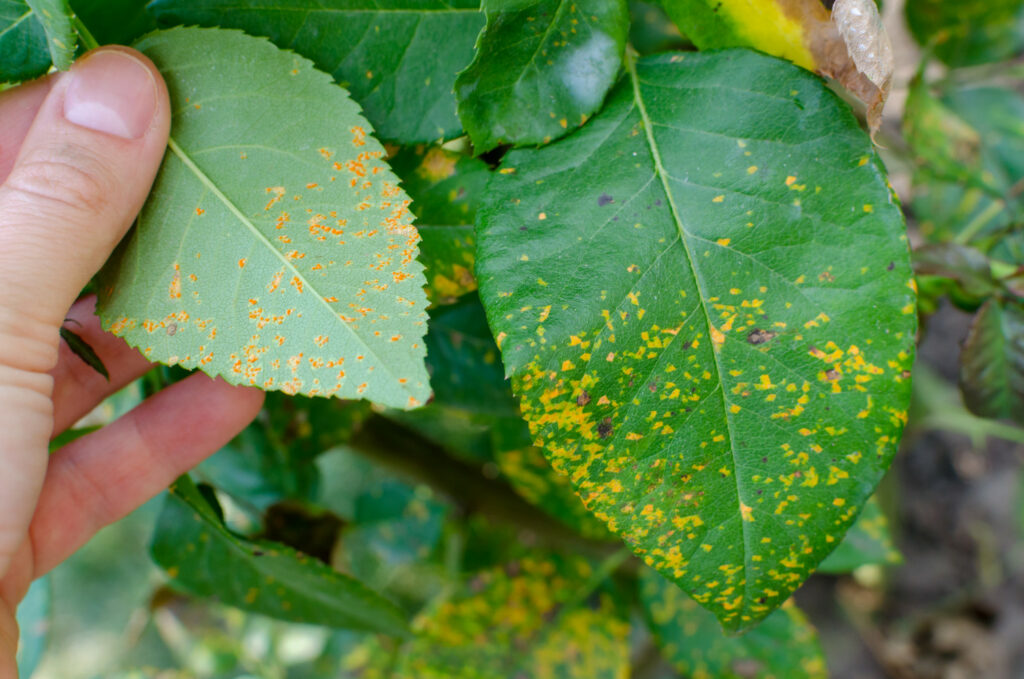Understanding Rose Rust: Identifying the Fungal Disease
Rose rust is a common fungal disease affecting rose plants, characterized by orange, red, or yellow pustules on the undersides of leaves. The disease spreads through wind, water, and infected plant material, causing leaves to yellow, wilt, and drop prematurely. To identify rose rust, look for discolored spots on the upper leaf surface, accompanied by powdery pustules on the underside. It is crucial to distinguish rose rust from other rose diseases, such as black spot or powdery mildew, as each requires specific treatment strategies.
Prompt treatment of rose rust is essential to maintain the health and appearance of rose plants. Neglected rose rust infestations can weaken plants, reduce flowering, and potentially lead to plant death. By understanding the causes, symptoms, and prevention methods for rose rust, gardeners can protect their rose plants and ensure their long-term beauty and vitality.
Preventive Measures: Keeping Rose Rust at Bay
Preventing rose rust is crucial for maintaining healthy rose plants and minimizing the need for fungicidal treatments. By employing a few simple strategies, gardeners can significantly reduce the likelihood of rose rust infestations. Here are some preventive measures to consider:
- Proper Spacing: Plant roses with adequate space between them to ensure good air circulation. This helps dry leaves quickly, making it difficult for rust spores to establish.
- Watering Techniques: Water roses at the base, avoiding wetting the foliage. Wet leaves can facilitate rust spore germination and spread. Irrigate early in the day to allow leaves to dry completely before nightfall.
- Pruning: Prune roses regularly to remove dead or diseased plant material and encourage new growth. Proper pruning techniques can help prevent rust spores from overwintering in rose plants.
- Rust-Resistant Varieties: Plant rust-resistant rose varieties whenever possible. These cultivars have been bred to withstand common rose diseases, including rose rust, and often require less maintenance and treatment.
- Good Garden Hygiene: Remove and dispose of infected plant material promptly. Clean gardening tools with a 10% bleach solution or rubbing alcohol to prevent the spread of rust spores.
By incorporating these preventive measures into their rose care routine, gardeners can significantly reduce the likelihood of rose rust infestations and maintain healthy, beautiful rose plants.
Manual Removal: Eliminating Visible Rust Spores
Manual removal of infected rose leaves and stems is an essential step in controlling rose rust. By removing visible rust spores, you can prevent the spread of the disease to other parts of the plant and neighboring roses. Here’s how to perform manual removal effectively:
- Inspect Plants Regularly: Examine rose plants for signs of rust, such as discolored spots on leaves and powdery pustules on the undersides. Regular inspections allow for early detection and removal of infected plant material.
- Remove Infected Leaves and Stems: Using clean gardening tools, carefully remove infected leaves and stems. Dispose of the infected material in a sealed bag or container to prevent the spread of rust spores in the garden.
- Clean Gardening Tools: After removing infected plant material, clean your gardening tools with a 10% bleach solution or rubbing alcohol. This step helps eliminate any residual rust spores and prevents cross-contamination between plants.
- Dispose of Infected Material Properly: Do not compost infected plant material, as the high heat required to kill rust spores may not be reached in a typical compost pile. Instead, dispose of infected material in the trash or burn it if permitted in your area.
Manual removal, combined with other preventive measures and treatments, can help control rose rust and maintain healthy, beautiful rose plants. Remember to always wash your hands and gardening clothes after handling infected plant material to avoid spreading rust spores to other plants or areas of your garden.
Fungicidal Treatments: Controlling Rose Rust
Fungicides are chemical compounds designed to control and eliminate fungal diseases, including rose rust. Various fungicides are available for treating rose rust, each with unique application methods and frequencies. Here’s an overview of some common fungicides and their usage:
- Copper-Based Fungicides: Copper fungicides, such as copper sulfate and copper octanoate, are broad-spectrum fungicides that effectively control rose rust. Apply these products as a spray, coating the entire plant. Copper-based fungicides are typically applied every 7-10 days during the growing season.
- Bordeaux Mixture: A combination of copper sulfate, hydrated lime, and water, Bordeaux mixture provides a protective barrier against rose rust. Apply this fungicide as a spray, covering the entire plant. Bordeaux mixture is typically applied every 7-10 days during the growing season.
- Strobilurin Fungicides: Strobilurin fungicides, such as azoxystrobin and trifloxystrobin, inhibit spore germination and mycelial growth. These products are usually applied as a spray, and their frequency varies depending on the specific product instructions.
- Dithiocarbamate Fungicides: Dithiocarbamates, such as mancozeb and metiram, are protectant fungicides that prevent rust spores from infecting rose plants. Apply these products as a spray, coating the entire plant. Dithiocarbamates are typically applied every 7-10 days during the growing season.
To prevent fungicide resistance, rotate fungicides with different modes of action throughout the growing season. Always follow the manufacturer’s instructions for application rates, frequencies, and safety precautions. Fungicidal treatments, when combined with other preventive measures and regular monitoring, can help control rose rust and maintain healthy, beautiful rose plants.
Organic Solutions: Using Natural Alternatives
In addition to traditional fungicidal treatments, organic solutions can also help control rose rust. Natural alternatives, such as neem oil, baking soda, and horticultural oil, offer effective and eco-friendly options for rose rust management. Here’s a closer look at these organic solutions and their application methods:
- Neem Oil: Derived from the seeds of the neem tree, neem oil is a broad-spectrum fungicide and insecticide. To use neem oil for rose rust control, mix it with water according to the manufacturer’s instructions and apply it as a spray, coating the entire plant. Neem oil is typically applied every 7-14 days during the growing season.
- Baking Soda: A simple household ingredient, baking soda, can help control rose rust by altering the pH of the plant surface, making it less hospitable to fungal spores. Mix 1 tablespoon of baking soda with 1 gallon of water and add a few drops of dish soap to help the solution adhere to the plant. Apply this mixture as a spray, coating the entire plant. Baking soda treatments should be applied every 7-14 days during the growing season.
- Horticultural Oil: Horticultural oils, such as summer or dormant oils, can help control rose rust by suffocating fungal spores. These oils are typically made from refined petroleum or plant-based ingredients. Apply horticultural oil as a spray, coating the entire plant. The frequency of application varies depending on the specific product instructions.
While organic solutions can be effective in controlling rose rust, they may not be as potent as traditional fungicides. Therefore, it’s essential to combine these treatments with other preventive measures and regular monitoring to maintain rose health. Always follow the manufacturer’s instructions for application rates, frequencies, and safety precautions when using organic solutions for rose rust treatment.
Monitoring Progress: Assessing Rose Health
After implementing rose rust treatments, it’s crucial to monitor rose plants for signs of rust recurrence. Regular inspections allow you to identify and address any new infections promptly, ensuring the long-term health of your roses. Here’s how to assess rose health and maintain vigilance against rose rust:
- Inspect Plants Regularly: Schedule weekly inspections of your rose plants, checking both the upper and lower surfaces of leaves for signs of rust. Look for orange, red, or yellow pustules, as well as discolored spots or yellowing leaves. Catching rose rust early helps prevent its spread and minimizes damage to the plant.
- Document Your Observations: Keep a record of your inspections, noting the date, plant condition, and any treatments applied. This documentation helps you track the progress of your rose plants and identify patterns or trends in rust infections.
- Address New Infections Promptly: If you detect new rose rust infections during your inspections, take immediate action to remove infected plant material and consider additional treatments, such as fungicides or organic solutions. Early intervention is key to controlling rose rust and preventing its spread.
By incorporating regular inspections into your rose care routine, you can maintain vigilance against rose rust and ensure the long-term health and beauty of your plants. Remember, consistent monitoring and early intervention are essential components of effective rose rust management.
Maintaining Rose Health: Promoting Vigorous Growth
Maintaining the overall health of your rose plants is crucial for preventing rose rust and other fungal diseases. By following these tips for proper watering, fertilization, and pest control, you can promote vigorous growth and strengthen your roses’ natural defenses:
- Proper Watering: Water rose plants at the base, avoiding wetting the foliage, as moisture on leaves can encourage fungal growth. Use a soaker hose or drip irrigation system to deliver water directly to the roots. Water early in the day, allowing the leaves to dry before nightfall.
- Fertilization: Fertilize rose plants according to their specific needs and the type of soil in which they are grown. A slow-release fertilizer, applied in early spring and late fall, can provide essential nutrients throughout the growing season. Regularly test your soil to ensure it has the proper pH and nutrient levels for optimal rose health.
- Pest Control: Monitor rose plants for signs of common pests, such as aphids, spider mites, and Japanese beetles. Remove pests by hand or use insecticidal soap or horticultural oil to control infestations. Always follow the manufacturer’s instructions for application rates and frequencies.
- Regular Pruning: Prune rose plants regularly to remove dead or diseased wood, encourage bushy growth, and improve air circulation. Proper pruning techniques can help prevent the spread of rose rust and other fungal diseases by promoting faster drying of foliage.
- Mulching: Apply a 2-3 inch layer of organic mulch around rose plants to conserve moisture, suppress weeds, and maintain a consistent soil temperature. Mulching also helps prevent soil-borne fungal spores from splashing onto rose leaves during watering.
By following these practices, you can maintain the health of your rose plants and reduce their susceptibility to rose rust and other fungal diseases. A strong, vigorous rose plant is better equipped to withstand and recover from fungal infections, ensuring its long-term beauty and productivity.
When to Seek Professional Help: Consulting a Rosarian or Horticulturist
While many rose rust treatments can be performed by home gardeners, there are situations where professional help is necessary. Seeking the assistance of a rosarian or horticulturist can ensure the most effective treatment and long-term control of rose rust, especially when dealing with severe infestations or resistant rust strains. Here’s when to consider consulting a professional:
- Severe Infestations: If your rose plants are heavily infested with rose rust, or if the disease has spread to multiple plants, it may be challenging to manage the situation without professional guidance. A rosarian or horticulturist can evaluate the extent of the infestation and recommend appropriate treatments and preventive measures.
- Resistant Rust Strains: Some rose rust strains have developed resistance to certain fungicides, making them difficult to control. A rosarian or horticulturist can help identify resistant strains and suggest alternative treatment options, such as organic solutions or cultural practices, to manage the disease.
- Expert Advice: Rosarians and horticulturists possess extensive knowledge about rose varieties, diseases, and growing conditions. Consulting a professional can provide valuable insights into rose care, helping you maintain healthy plants and prevent future rose rust infections.
To find a local rosarian or horticulturist, consider contacting your county’s cooperative extension office, local botanical gardens, or horticultural societies. These organizations often maintain lists of experts available for consultation and can provide recommendations based on your specific needs and location.
Remember, addressing rose rust promptly and effectively is crucial for maintaining the health and beauty of your rose plants. Don’t hesitate to seek professional help if you’re unsure about the best course of action for treating rose rust in your garden.






